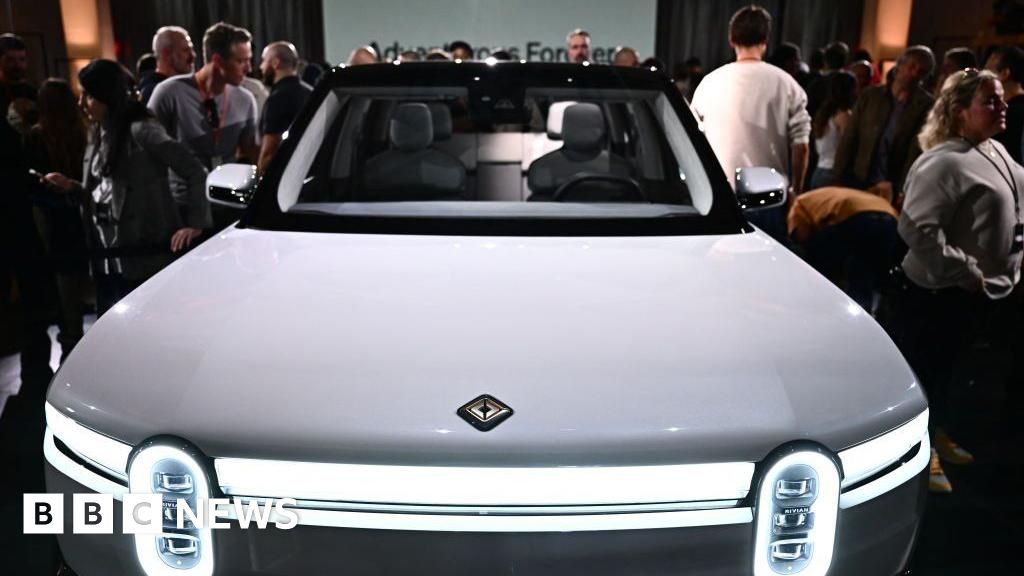Volkswagen Group (VW) and Tesla rival Rivian have launched a joint venture, with the German auto giant increasing its investment in the partnership.
The companies say the deal is worth $5.8 billion (£4.55 billion), more than the $5 billion originally promised by VW.
Following the announcement, the U.S. electric vehicle (EV) maker’s stock rose more than 9% in after-hours trading.
The partnership will see the two companies share key technologies as global demand for electric vehicles slows and competition from Chinese rivals intensifies.
The joint venture will provide loss-making Rivian with a key source of funding for next year’s launch of its R2 model, a smaller and more affordable sport-utility vehicle (SUV) than its current product.
It also means VW will be able to use Rivian technology in its own vehicles.
The first VW models equipped with Rivian technology are expected to be available to customers as early as 2027.
“By combining our complementary expertise, both companies plan to reduce development costs and scale new technologies more quickly,” the companies said in a statement.
Under the plan, developers and software engineers from both companies will initially work together in California, with three other facilities to be established in North America and Europe.
The move comes amid growing expectations that Europe’s largest carmaker, Volkswagen, plans to announce major cost-cutting measures.
The group, which also includes brands such as Audi, Lamborghini and Porsche, has struggled with high costs, weak sales, competition from Chinese EV makers and a slower-than-expected shift away from gasoline and diesel cars. I am doing it.
Separately, Rivian has taken steps to cut costs as demand for EVs slows.
The startup is not yet profitable, but it is renegotiating contracts with suppliers and making its manufacturing process more efficient.
In addition to SUVs, Rivian also makes electric delivery vans, primarily for online retail giant Amazon, which is its largest shareholder.
Amazon has ordered 100,000 vehicles, all of which are expected to be delivered by the end of 2010.



